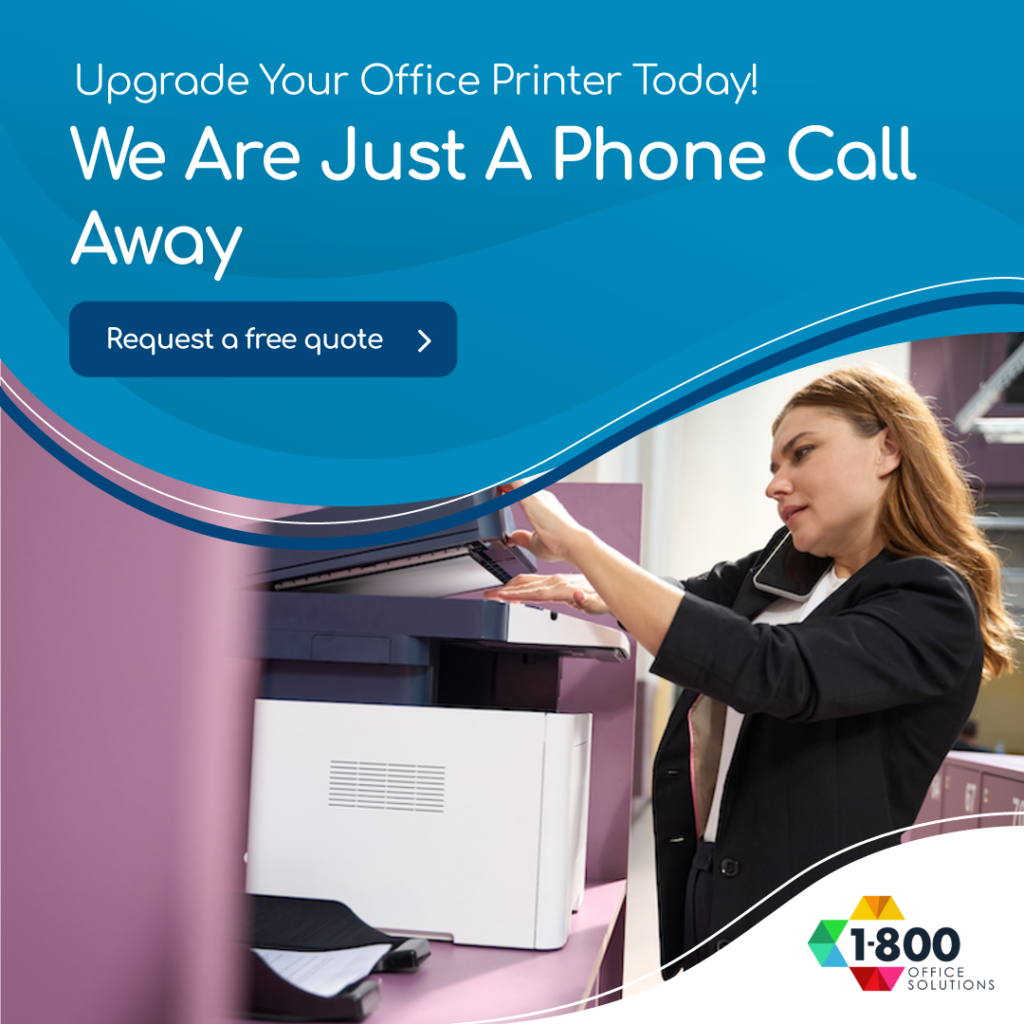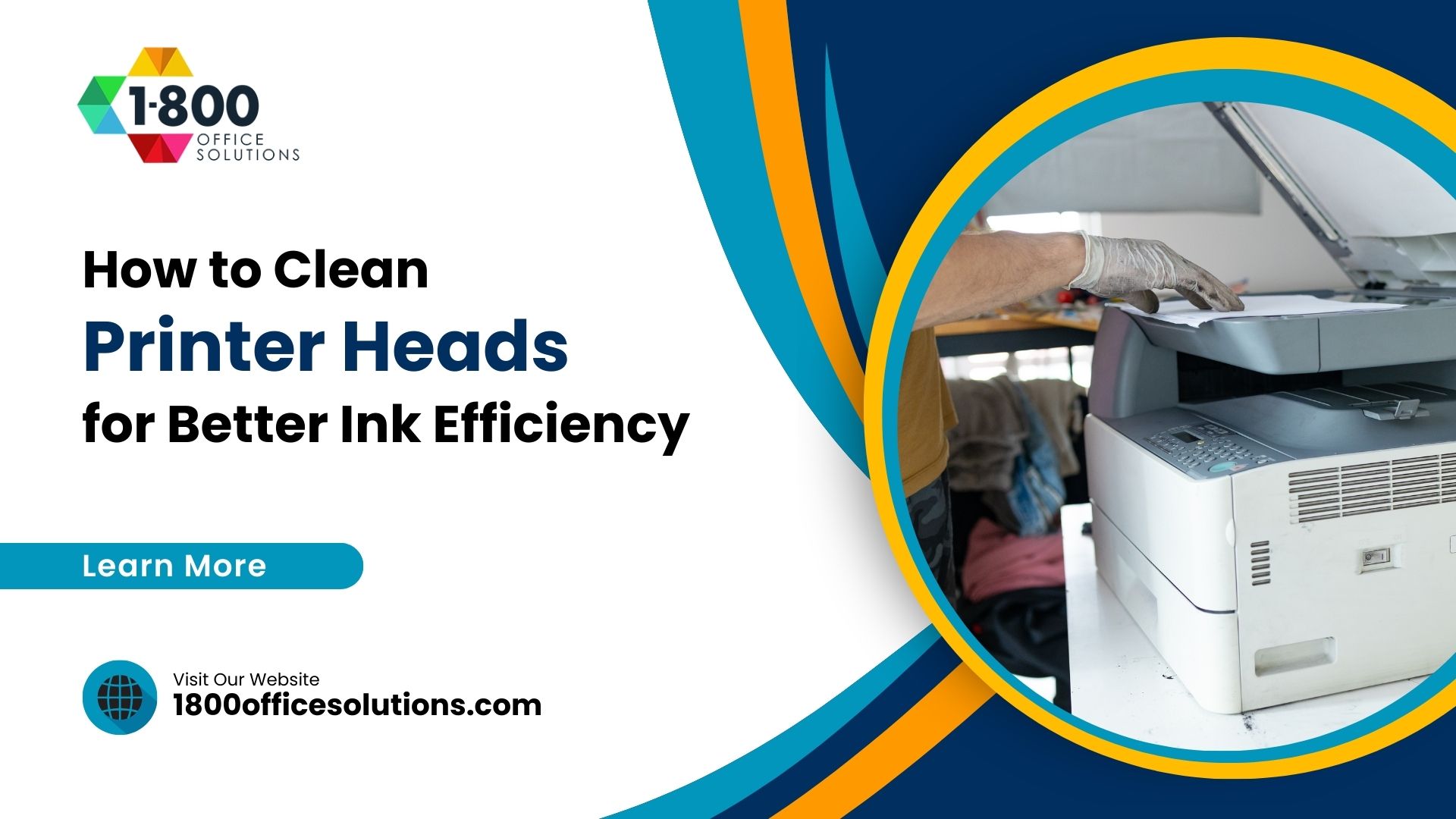Troubleshooting Commercial Copier Issues: The Solutions You Didn’t Know Existed
Introduction to Commercial Copier Issues
In the bustling environment of a modern office, few pieces of equipment are as crucial as the copier and printer. These machines are the lifeblood of paperwork and documentation. However, they are not without their issues. From the annoying paper jam to the frustratingly poor print quality, commercial copier issues can be a significant hindrance to productivity. Understanding these problems is the first step to troubleshoot and fix them effectively.
In this blog post you’ll learn the basic issues of photocopy machine or your home printer. Moreover you’ll get a comprehensive guide on how to troubleshooting commercial copier issues.
The Importance of Knowing Your Office Technology
In the digital age, a basic understanding of your office technology, including the printer and copier, is essential. It empowers employees to solve minor issues independently, reducing downtime and reliance on a technician. For instance, knowing how to properly replace a toner or cartridge can save valuable time. Many companies for Businesses provides a comprehensive guide on dealing with typical IT issues in a business setting.
Common Copier & Printer Problems
- Paper Jams: A paper jam is one of the most common copier issues. It occurs when the paper gets stuck in the copy machine, often due to improper alignment or a dirty paper tray. Regular maintenance and cleaning can help prevent this issue.
- Poor Print Quality: Poor print quality can manifest as streaks, lines, or faded prints. This problem often arises from low toner levels, a worn-out cartridge, or a malfunctioning print head.
- Overheating: Like any machine, copiers and printers can overheat if used continuously for extended periods. Allowing the machine to rest and ensuring adequate ventilation can help mitigate this issue.
- Slow Printing Speed: A slow printer can be a significant bottleneck in office productivity. This issue can be due to several factors, including high-resolution settings, memory issues, or a slow computer processor.
- Connectivity Issues: In a world where most devices are interconnected, connectivity issues can be a major problem. These can range from Wi-Fi connection problems to issues with the printer drivers. Understanding Printer Problems and Solutions offers a detailed guide on resolving these issues.
The Impact of Copier Issues on Business Operations
The impact of copier issues on business operations cannot be overstated. A malfunctioning printer or copy machine can lead to significant delays, affecting deadlines and disrupting the workflow. Moreover, frequent breakdowns can lead to increased maintenance costs and reduced efficiency. Therefore, understanding these issues and knowing how to fix the problem promptly is crucial for maintaining smooth business operations.
Unveiling the Unknown Solutions
Troubleshooting Common Copier Problems
When it comes to office printer and copier problems, knowing the problems and their solutions can save you a lot of time and frustration. Here are some common office printer problems and how to fix them:
- Solutions to Paper Jams: One of the 5 common printer problems is paper jams. This common copier problem often occurs when the copier paper is not loaded correctly or when there’s paper dust inside the machine. To fix this, remove the jammed paper carefully to avoid damaging the inside of the copier. Ensure the paper type and paper size are correct, as the wrong paper can cause paper jams. Regular copier maintenance can also prevent this common copy machine problem.
- Improving Print Quality: If your print job is producing poor quality prints, it could be a problem with the toner cartridge or an imbalance in the density controls. Check the density levels and try resetting them if the print is too dark or too light. If the finished copy contains streaks or spots, it might be time to replace the toner cartridge.
- Preventing Overheating: Overheating is a common issue with multifunction printers. Ensure there’s enough ventilation around the printer and avoid overusing it. Regular breaks between large print jobs can prevent overheating.
- Increasing Printing Speed: If your printer won’t print quickly, check the print resolution settings. High-resolution settings can slow down printing. Also, check the printer driver to make sure it’s up-to-date.
- Resolving Connectivity Issues: Connectivity issues can arise due to incompatibility issues or problems with the printer driver. Ensure you have the right driver for your printer installed. If you’re printing wirelessly, check the Wi-Fi connection.
Advanced Troubleshooting Techniques
Sometimes, simple solutions might not be enough to fix the issue. In such cases, advanced troubleshooting techniques come into play. These could involve resetting the printer, updating the firmware, or even delving into manufacturer codes to identify the problem. Always refer to the user manual or seek help from managed print services for these advanced techniques.
The Role of IT in Troubleshooting Copier Issues
The IT department plays a crucial role in troubleshooting copier problems. IT professionals possess the technical expertise to diagnose and resolve complex problems that go beyond simple paper jams or toner replacements. They are equipped to handle issues related to printer drivers, connectivity, firmware updates, and even intricate hardware malfunctions.
In a world where copiers are often part of a networked system, IT professionals ensure seamless integration with other devices and platforms. They can troubleshoot connectivity issues, ensuring that printers and copiers are accessible to all authorized users within the organization. This includes resolving Wi-Fi connection problems, printer driver compatibility, and other network-related challenges.
Furthermore, IT departments often conduct routine maintenance checks and updates to prevent future issues. This proactive approach includes keeping the firmware up-to-date, monitoring the overall health of the machines, and implementing security measures to protect sensitive information.
Additionally, IT professionals can provide training and support to staff, empowering them to handle minor issues independently. This not only reduces downtime but also fosters a sense of ownership and responsibility among employees.
In essence, the role of IT in troubleshooting copier issues is multifaceted and extends beyond mere problem-solving. It encompasses preventive measures, continuous monitoring, and education, all aimed at ensuring that copiers and printers function efficiently and securely within the business ecosystem. Their expertise contributes to minimizing disruptions and maintaining smooth business operations, making them an invaluable asset to any organization.
When to Seek Professional Help
While many common printing problems can be resolved in-house, some issues require professional help. Knowing when to seek external assistance is crucial to maintaining the efficiency and functionality of your office equipment.
- Frequent Jamming: If your printer is jamming frequently and you’ve tried all the recommended troubleshooting steps without success, it might be indicative of a more serious underlying issue. A professional technician can diagnose the problem, whether it’s a misalignment within the machine or a worn-out part that needs replacement.
- Consistently Poor Print Quality: Producing consistently poor quality prints, despite changing the toner or cartridge and adjusting the print settings, could be a sign of a malfunctioning print head or another complex issue. Professional intervention can pinpoint the exact cause and provide the necessary repairs or replacements.
- Running Out of Toner and Quality Issues: If you’ve run out of toner and the quality of copies doesn’t improve even after replacing the cartridge, it might be time to seek professional help. This could be a sign of an imbalance in the density controls or a more intricate problem within the machine.
- Complex Connectivity Issues: While basic connectivity issues can often be resolved by IT professionals within the organization, more complex problems might require specialized expertise. This includes issues related to network security, integration with specialized software, or compatibility with various devices within a large network.
- Overheating and Mechanical Failures: Overheating or mechanical failures that persist despite regular maintenance and adherence to the user manual’s guidelines are clear signs that professional intervention is needed. These could be symptoms of a serious hardware failure that requires specialized tools and knowledge to repair.
- Preventive Maintenance and Inspections: Regular preventive maintenance and inspections by a professional service provider can also be a wise investment. They can detect potential problems early, reducing the risk of unexpected breakdowns and costly emergency repairs.
- Training and Support: Sometimes, professional help is not just about fixing a problem but also about educating the staff. Training sessions conducted by experts can empower employees to handle minor issues independently and use the equipment more efficiently.
Remember, a well-maintained office equipment is key to smooth and efficient operations. While in-house troubleshooting and maintenance are essential, knowing when to seek professional help can save valuable time and resources.
It ensures that your printers and copiers are always in optimal condition, minimizing disruptions and maximizing productivity. It’s not just about fixing a problem; it’s about leveraging expertise to enhance the overall performance and longevity of your office technology.
What People Also Ask
What advanced troubleshooting techniques can be used for copier issues?
Resetting the Printer: Sometimes, resetting the printer can help resolve issues. Updating the Firmware: Keeping the printer's firmware up-to-date can help prevent and resolve issues. Checking Manufacturer Codes: Manufacturer codes can provide specific information about the problem, which can help in troubleshooting.
When should professional help be sought for copier issues?
If the printer is frequently jamming, producing consistently poor quality prints, or if the toner has run out and replacing it didn't help, it might be time to seek professional help.
What role does IT play in troubleshooting copier issues?
The IT department can help resolve complex problems such as printer driver issues and ensure the printer is working properly. They can also conduct routine maintenance to prevent future issues.
What are some common printing problems and how can they be fixed?
Paper not feeding properly: This can be due to the type of paper used or the condition of the paper tray. Using the right type of paper and keeping the paper tray clean can help. Prints are too light or too dark: This can be due to the density controls being improperly set. Resetting the density controls can help.
Printer is not connecting to the computer: This can be due to outdated printer drivers or a poor Wi-Fi connection. Updating the printer drivers or improving the Wi-Fi connection can help.
Conclusion
Troubleshooting commercial copier issues can seem daunting, especially when productivity is at stake. However, with a basic understanding of common problems and their solutions, many of these issues can be resolved quickly and efficiently. From paper jams to connectivity issues, knowing how to identify and fix these problems can significantly reduce downtime and improve office productivity.
Advanced troubleshooting techniques and the role of IT can further enhance your problem-solving capabilities. And while it’s empowering to solve these issues independently, knowing when to seek professional help is equally important.
Remember, regular maintenance is key to preventing many of these issues in the first place. By taking a proactive approach to copier maintenance, you can ensure that your office copier remains a reliable and efficient tool for your business.
In the end, the goal is not just to fix the problem, but to understand it. By doing so, you’ll be better prepared to prevent these issues from occurring in the future, ensuring that your office operations run smoothly and efficiently.












